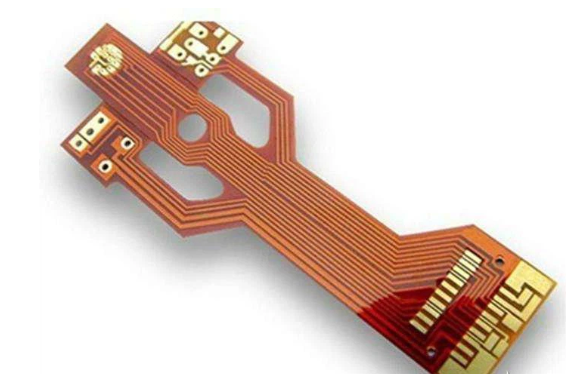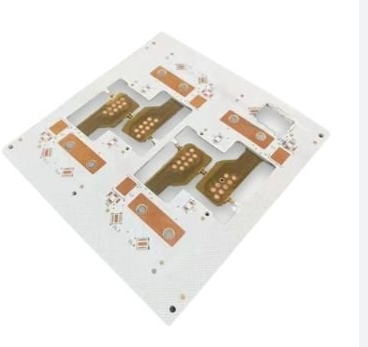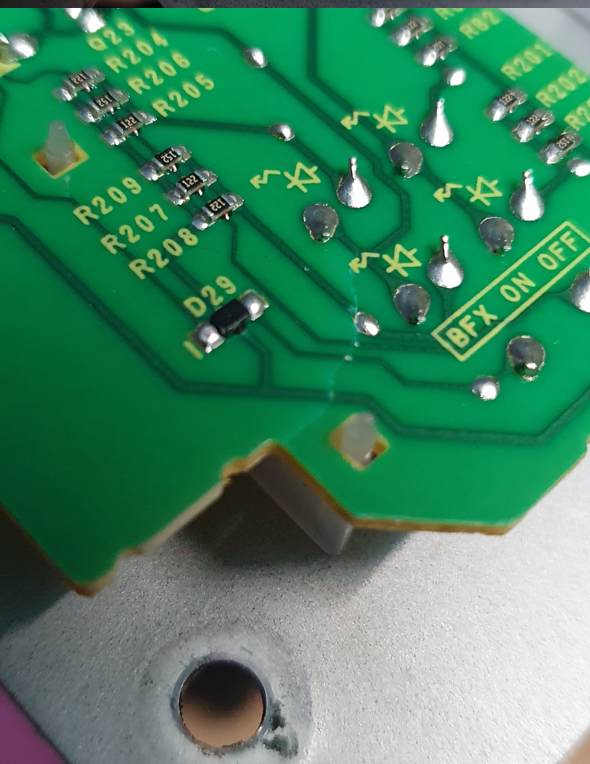PCB Impedance Matching: Principles, Techniques, and Best Practices
Introduction to Impedance Matching in PCB Design
Impedance matching is a fundamental concept in printed circuit board (PCB) design that ensures maximum power transfer and minimizes signal reflections in high-frequency circuits. As electronic devices continue to operate at increasingly higher frequencies, proper impedance matching has become critical for maintaining signal integrity and achieving optimal system performance.
In simple terms, impedance matching refers to the practice of designing transmission lines and terminations so that the source impedance matches the load impedance. When this condition is met, the maximum amount of power is transferred from the source to the load, and signal reflections are minimized. In PCB design, this primarily concerns the traces that carry high-frequency signals between components.
The importance of impedance matching has grown exponentially with the rise of high-speed digital systems, RF circuits, and high-frequency analog applications. Modern technologies such as 5G communications, high-speed memory interfaces (DDR4/5), PCI Express, USB 3.x/4, and high-frequency switching power supplies all require careful attention to impedance matching to function properly.
Fundamentals of Transmission Line Theory
To understand impedance matching, we must first examine some basic transmission line theory. At high frequencies, PCB traces no longer behave as simple conductors but as transmission lines with distributed capacitance and inductance along their length.
The characteristic impedance (Z₀) of a transmission line is determined by its physical geometry and the dielectric properties of the surrounding materials. For a typical microstrip trace (on the outer layers of a PCB), the characteristic impedance can be approximated by:
Z₀ = (87/√(ε_r+1.41)) * ln(5.98h/(0.8w + t))
Where:
- ε_r is the dielectric constant of the PCB material
- h is the height of the dielectric (substrate thickness)
- w is the width of the trace
- t is the thickness of the trace
For stripline traces (embedded between two reference planes), the calculation differs slightly:
Z₀ = (60/√ε_r) * ln(4h/(0.67π(0.8w + t)))
When a transmission line is terminated with an impedance equal to its characteristic impedance, all energy is absorbed by the load, and no reflections occur. However, when there’s a mismatch, part of the signal reflects back toward the source, potentially causing signal integrity issues like ringing, overshoot, or undershoot.
Common Impedance Standards in PCB Design
Various standards have emerged for characteristic impedances in PCB design, with some of the most common being:
- 50Ω: The most widely used impedance for RF systems, test equipment, and single-ended digital signals
- 75Ω: Common in video applications and some RF systems
- 90Ω: Often used for differential pairs (with 100Ω being more common)
- 100Ω: The standard for many differential digital interfaces (USB, Ethernet, LVDS, etc.)
- 120Ω: Used in some differential systems, particularly in legacy RS-485 applications
The choice of impedance depends on several factors:
- System requirements and interface standards
- Power handling capability (lower impedances can handle more power)
- Signal-to-noise considerations
- Historical conventions in specific applications

Impedance Matching Techniques
Several techniques exist for achieving proper impedance matching in PCB designs:
1. Source-Series Termination
This technique places a series resistor at the driver end of the transmission line. The resistor value is chosen such that the sum of the resistor and driver output impedance matches the characteristic impedance of the transmission line.
Advantages:
- Simple implementation
- Reduces power consumption compared to parallel termination
- Works well for point-to-point connections
Disadvantages:
- Not suitable for multi-drop buses
- The receiver sees only half the voltage initially (until the reflection returns)
2. Parallel Termination
In this method, a resistor equal to the characteristic impedance is placed at the end of the transmission line (receiving end).
Advantages:
- Excellent signal integrity
- Simple to implement
- Works for multi-point connections
Disadvantages:
- Continuous DC power consumption
- May reduce noise margins in some cases
3. AC Termination (RC Termination)
This combines a capacitor and resistor in series at the load end, where the resistor matches the line impedance. The capacitor blocks DC current, reducing power consumption.
Advantages:
- Reduces DC power consumption
- Good for buses with varying numbers of receivers
Disadvantages:
- More complex than simple parallel termination
- Requires proper capacitor selection based on signal frequency
4. Differential Pair Termination
Differential signaling requires matching both the differential impedance (between the pair) and common-mode impedance (of each line to ground). Common approaches include:
- Parallel termination: Placing a resistor across the pair at the receiver
- Split termination: Using two resistors (each Z₀/2) from each line to ground
- Pi termination: Combining series and parallel elements for broadband matching
5. Stub Matching Techniques
For RF applications, several stub-based matching techniques exist:
- Quarter-wave transformer: Uses a λ/4 transmission line segment to transform impedances
- Single-stub matching: Adds a shunt or series stub to cancel reactance
- Double-stub matching: Provides more flexibility in matching complex impedances
PCB Design Considerations for Impedance Control
Achieving consistent impedance in actual PCB layouts requires attention to numerous design factors:
1. Stackup Design
The PCB stackup must be carefully designed to support the required impedances. Key considerations include:
- Dielectric material selection (FR-4, Rogers, etc.)
- Layer thicknesses (core and prepreg)
- Copper weights (affecting trace thickness)
- Distance to reference planes
2. Trace Geometry
The physical dimensions of traces significantly impact impedance:
- Trace width (primary control parameter)
- Trace thickness (copper weight)
- Distance to reference planes
- Presence of solder mask (affects effective dielectric constant)
3. Differential Pair Routing
For differential signals, additional factors come into play:
- Pair spacing (affects coupling and differential impedance)
- Length matching (to maintain timing)
- Symmetry in routing (to maintain balance)
4. Reference Planes
Proper reference planes are essential for controlled impedance:
- Continuous planes beneath signal layers
- Adequate return paths
- Minimizing splits and voids in reference planes
- Proper stitching via placement
5. Bends and Transitions
Signal path discontinuities can cause impedance variations:
- Mitre bends (typically 45° with length compensation)
- Via transitions (use techniques like back-drilling or microvias)
- Layer changes (maintain reference plane continuity)
Impedance Calculation and Simulation
Modern PCB design relies on several tools for impedance management:
1. Field Solvers
Advanced electromagnetic field solvers can calculate impedance with high accuracy by solving Maxwell’s equations for the specific geometry. Popular tools include:
- 2D field solvers (for basic cross-sections)
- 3D field solvers (for complex structures)
2. Transmission Line Calculators
Many EDA tools include built-in calculators based on analytical formulas for common structures:
- Microstrip
- Stripline
- Coplanar waveguide
- Edge-coupled differential pairs
- Broadside-coupled differential pairs
3. Full-wave Simulation
For critical designs, full-wave electromagnetic simulation can model:
- Complex 3D structures
- Discontinuities (vias, connectors)
- Radiation effects
- Cross-talk between traces
4. Measurement and Verification
After manufacturing, impedance can be verified using:
- Time Domain Reflectometry (TDR)
- Vector Network Analysis (VNA)
- Coupled line measurements
Common Challenges and Troubleshooting
Despite careful design, engineers often face impedance-related challenges:
1. Manufacturing Variations
PCB fabrication introduces tolerances that affect impedance:
- ±10% variation in dielectric thickness is common
- Etching processes affect final trace width
- Copper thickness variations
- Dielectric constant variations (especially with FR-4)
2. Discontinuities
Various structures cause impedance discontinuities:
- Vias (especially in high-layer-count boards)
- Connectors and component packages
- Test points and probing pads
- Changes in reference planes
3. Frequency-dependent Effects
At higher frequencies, additional considerations emerge:
- Skin effect increases conductor loss
- Dielectric loss becomes significant
- Surface roughness affects loss tangent
- Dispersion causes frequency-dependent phase velocity
4. Material Selection
Choosing the right PCB material involves trade-offs:
- Standard FR-4 is cost-effective but has limitations above a few GHz
- High-frequency laminates (Rogers, Taconic) offer better performance at higher cost
- Loss tangent becomes critical for long traces or high frequencies
Best Practices for PCB Impedance Matching
Based on industry experience, these best practices can help achieve reliable impedance matching:
- Early Collaboration with Fabricators: Work with your PCB manufacturer during the design phase to understand their capabilities and typical tolerances.
- Conservative Design Rules: Account for manufacturing variations by designing with tolerances in mind (e.g., aim for nominal impedance slightly below target).
- Consistent Reference Planes: Maintain unbroken reference planes beneath impedance-controlled traces whenever possible.
- Minimize Discontinuities: Avoid unnecessary vias, layer changes, or breaks in reference planes for critical signals.
- Proper Termination: Select termination strategies appropriate for the signal type and topology (point-to-point vs. multi-drop).
- Simulation and Verification: Use simulation tools throughout the design process and verify with measurements when possible.
- Documentation: Clearly specify impedance requirements in fabrication drawings and assembly documents.
- Test Coupons: Include test structures on panel edges to verify impedance without sacrificing production boards.

Future Trends in PCB Impedance Matching
As technology advances, new challenges and solutions emerge in impedance matching:
- Higher Frequencies: Millimeter-wave applications (5G, automotive radar) require precise impedance control up to 100GHz and beyond.
- Advanced Materials: New substrate materials with lower loss and more stable dielectric constants enable better high-frequency performance.
- 3D Integration: Technologies like package-on-package and chip embedding create new impedance matching challenges.
- Automated Tuning: Machine learning algorithms may optimize impedance matching networks in real-time for adaptive systems.
- Photonic Integration: The convergence of optical and electrical signaling requires novel impedance matching approaches.
Conclusion
PCB impedance matching remains a critical aspect of modern electronic design, growing in importance as signal speeds continue to increase. Proper impedance control ensures signal integrity, reduces EMI, and maximizes power transfer in high-frequency circuits. By understanding transmission line theory, applying appropriate matching techniques, and following best practices in PCB layout, designers can create robust, high-performance electronic systems.
The field continues to evolve with new materials, design methodologies, and measurement techniques. Staying current with these developments while mastering the fundamentals will enable engineers to meet the impedance matching challenges of tomorrow’s high-speed designs.







